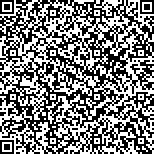下载中心
优秀审稿专家
优秀论文
相关链接
摘要

风云三号卫星搭载的中分辨率光谱成像仪MERSI(MEdium-Resolution Spectral Imager)与NASA的MODIS属于同类型传感器,大多数通道设计相似,具备气溶胶反演的能力,但目前还没有精度可靠、稳定且全球适用的业务化气溶胶产品可供使用。本文借鉴MODIS暗目标DT(Dark target)算法思想,针对新发射的风云三号D星搭载的升级版MERSI-II传感器,构建全球适用的陆地气溶胶反演算法。为测试MERSI-II传感器气溶胶反演的定量能力,并与MODIS气溶胶产品具有可对比性,本文算法设计尽可能与DT算法在各方面处理相一致,主要在两个方面进行了改进与优化:(1)考虑到传感器波段设置差异,给出了针对MERSI-II的地表反射率估计模型;(2)改进内陆水体判别方法,解决DT算法雾霾漏反演的缺陷。通过将单景反演结果与MODIS气溶胶产品对比,反演结果的空间分布和值域大小均具有较好的一致性,相关系数达到0.9以上;有效地实现雾霾高值区反演,而MODIS产品在该区域漏反演。通过对3个月份全球数据反演试验,利用AERONET地基站网观测数据对结果进行验证,落入期望误差EE=±(0.05+0.15τ)范围的点数达到65.14%,接近2/3的要求,相关系数达到0.866,整体具有较高的验证精度;MERSI幅宽大于MODIS,加之本文像元掩膜的改进,使得MERSI反演像元数增加更多,匹配的验证点比例较MODIS高出20%左右。进一步将月平均结果与MODIS进行对比,空间分布一致性较好,反演结果大小对比相关性较好,相关系数达到0.93左右。表明本文针对MERSI-II气溶胶反演算法结果已接近国际同类型产品的精度要求,将为全球长时间序列气溶胶观测有提供重要补充。从而印证了MERSI观测数据已具有较好的定量应用能力,传感器性能、定标等正在逐渐走向成熟。
The MEdium-Resolution Spectral Imager (MERSI) carried by the Chinese Fengyun-3 (FY-3) satellite belongs to the same type of sensor as MODIS of NASA. Most channels of MERSI are similar in design as MODIS and are capable for aerosol retrieval. However, no reliable, stable, and globally applicable operational products are available for MERSI.On the basis of MODIS Dark Target (DT) algorithm, this paper constructs a globally applicable land aerosol retrieval algorithm for the new generation MERSI-II sensor onboard the newly launched FY-3D satellite. The aim of this paper is to test the quantitative capability of the sensor; hence, the algorithm design is consistent with DT algorithm as much as possible. The improvements of this algorithm from the MODIS DT algorithm are mainly in two aspects: surface estimation model and pixel screen. Considering the difference in channel settings between MERSI and MODIS, a surface reflectance estimation model is proposed for MERSI-II. Moreover, the method of inland water mask is improved to solve the defect of DT algorithm in haze leakage retrieval.By comparing granule retrieval of MERSI-II with aerosol products of MODIS, the spatial distribution and magnitude of AOD value show good consistency with a correlation coefficient above 0.9. After improving the identification method of inland water mask, the high aerosol loading of haze region which was missing in MODIS aerosol product, has been successfully retrieved from MERSI-II in this paper. Finally, we conducted the retrieval test with three-month global observation of MERSI-II. A comparison of the retrieval results with ground-based observation of AERONET shows that the overall accuracy of validation is good, and the correlation coefficient of scatterplots reaches 0.866. Moreover, the number of collocated points falling into the expected error EE = ± (0.05 + 0.15 τ) reaches 65.14%, which is close to the requirement of 2/3. The larger width of MERSI, in addition to its improvement of pixel mask, increases the number of MERSI-retrieved pixels. The proportion of matched collocation points is approximately 20% more than that of MODIS. Furthermore, a comparison between the monthly average results of MERSI-II and MODIS shows that the consistency of their spatial distribution is good. The magnitude of AOD value has good correlation with a coefficient of approximately 0.93.In conclusion, aerosol retrieval from MERSI-II using the proposed algorithm is close to the present similar products. Such performance is an important supplement to the global time series aerosol observation. Therefore, MERSI has good quantitative application ability, and the sensor performance and calibration are gradually becoming mature.

